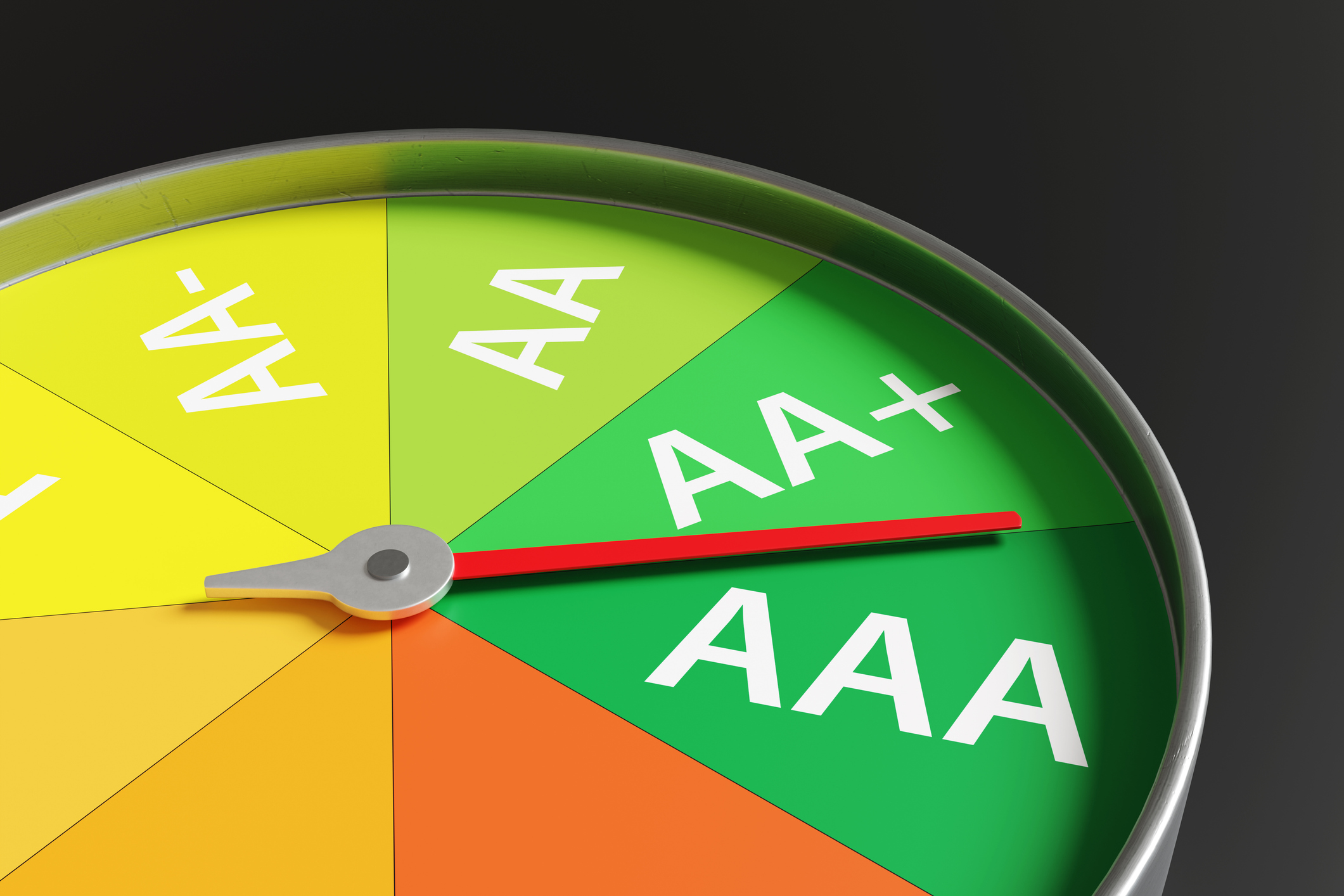Why You Should Avoid Most Bond Index Funds
Most of these funds are larded with securities issued by heavily indebted countries, including the U.S.

There’s a lot to like about index funds. Over the long term, stock index funds have beaten about two-thirds of actively managed funds -- largely because index funds generally charge much less. But bond index funds are a different story. Indeed, Vanguard Total Bond Market (symbol VBMFX), with assets of $118 billion, has lagged slightly more than half of actively managed funds in its category over the past 15 years despite charging much less than the average taxable bond fund. Over the past five years, the fund trails 81% of active funds.
Why? The biggest factor is the enormous amount of government debt. Most stock indexes weight securities by their market value (share price times number of shares outstanding). An example: Apple (AAPL) has some 6 billion shares outstanding and recently traded at $95.97. Multiply the two numbers and you get its market value of $579 billion. (All prices and returns in this article are through July 7.) Apple has the highest market capitalization of any U.S. company, so it accounts for 3.3% of Standard & Poor’s 500-stock index.
A company’s stock market value is influenced slightly by how many shares it issues. But the much bigger factor is how popular the stock is with investors. Since going public in 1980, Apple has climbed nearly 200-fold.

Sign up for Kiplinger’s Free E-Newsletters
Profit and prosper with the best of expert advice on investing, taxes, retirement, personal finance and more - straight to your e-mail.
Profit and prosper with the best of expert advice - straight to your e-mail.
Bonds are different. Yes, they rise and fall in price, but not nearly as much as stocks do. The price of an investment-grade bond typically doesn’t deviate much from the price on the day it was issued. That means the most important factor in its market value, and thus its weighting in an index fund, is the size of a particular issue.
And herein lies the rub: The federal government is $17 trillion–plus in debt. No U.S. company -- or companies in aggregate, for that matter -- has issued anywhere near $17 trillion worth of bonds.
The Vanguard fund, which tracks Barclay’s U.S. Aggregate Float Adjusted index, has 65% of its assets in U.S. government debt. The biggest share of that is in Treasury securities, but the fund also has 21% in government- backed mortgage securities. (The float-adjusted index excludes bonds held by the Federal Reserve, which has been trying to depress bond yields and other interest rates through its massive government-bond purchases.)
So when you buy the Vanguard index fund or a similar fund sponsored by another firm, you’re investing 70% of your money in government debt. That’s a giant allocation -- way too much, in my view.
Even Vanguard founder Jack Bogle, who practically invented index funds, says 70% in U.S. government bonds is too much. He’s proposed that the index be reworked to increase its exposure to corporate bonds.
One caveat: Because bond index funds own so much U.S. government debt, where there is little risk of default, these funds should hold up well in financial meltdowns. For instance, in 2008, the Vanguard index fund returned 5.1%, beating its peers -- funds that invest mainly in taxable investment-grade, intermediate-term bonds -- by an average of 9.8 percentage points.
The same government-debt bugaboo holds for foreign and global bond index funds, says Sarah Bush, a Morningstar analyst. Vanguard Total International Bond Index (VTIBX) has 81% of its assets in foreign-government bonds, topped by a 22% weighting in Japanese government securities, whose 10-year bond yields about 0.6%. Her advice on bond funds: “I lean toward actively managed and low-cost funds.”
What to do? Following are three options -- from my favorite to least favorite.
The first strategy is outlined in The Four Best Bond Funds to Own Now, which recommends minimizing the risk of rising bond yields (and their accompanying falling prices).
Second strategy: Among more-conventional bond funds, Fidelity Total Bond (FTBFX) is a solid choice. Over the past five years, the fund, a member of the Kiplinger 25, returned an annualized 6.7% -- 2.0 percentage points per year more than Barclay’s U.S. Aggregate Bond index. The fund’s average credit quality is triple-B. If interest rates rise by one percentage point, figure on the fund losing about 5% of its value. (Bond prices move in the opposite direction of rates.) Expenses are 0.45% annually.
Third strategy: If you’re a dyed-in-the-wool indexer, focus on funds that own high-quality corporate bonds. Vanguard Intermediate-Term Investment Grade (VFICX) has only about 6% of its assets in government bonds. Almost all the rest is invested in corporate bonds. Because the bonds are all high-quality, the fund steers away from overly indebted companies. Over the past ten years, the fund, which charges just 0.20%, returned an annualized 5.8% -- putting it ahead of only half of its peers. Be aware, too, that the fund has about 70% of its assets in bonds issued by industrial and financials companies, which tend to rise and fall with the economic cycle.
Steve Goldberg is an investment adviser in the Washington, D.C., area.
Get Kiplinger Today newsletter — free
Profit and prosper with the best of Kiplinger's advice on investing, taxes, retirement, personal finance and much more. Delivered daily. Enter your email in the box and click Sign Me Up.

-
 Trump’s Tax Cut Risks Your SNAP, Medicaid Benefits
Trump’s Tax Cut Risks Your SNAP, Medicaid BenefitsTax Cuts The GOP budget blueprint could slash lifesaving programs for millions of U.S. households.
By Gabriella Cruz-Martínez
-
 Can Trump Fire Powell? A Supreme Court Case Could Decide
Can Trump Fire Powell? A Supreme Court Case Could DecidePresidential posts threaten to overwhelm decades of precedent and tradition, whatever the nine justices decide.
By David Dittman
-
 Smart Ways to Invest Your Money This Year
Smart Ways to Invest Your Money This YearFollowing a red-hot run for the equities market, folks are looking for smart ways to invest this year. Stocks, bonds and CDs all have something to offer in 2024.
By Jeff Reeves
-
 Vanguard's New International Fund Targets Dividend Growth
Vanguard's New International Fund Targets Dividend GrowthInvestors may be skittish about buying international stocks, but this new Vanguard fund that targets stable dividend growers could ease their minds.
By Nellie S. Huang
-
 Best 401(k) Investments: Where to Invest
Best 401(k) Investments: Where to InvestKnowing where to find the best 401(k) investments to put your money can be difficult. Here, we rank 10 of the largest retirement funds.
By Nellie S. Huang
-
 7 Best Stocks to Gift Your Grandchildren
7 Best Stocks to Gift Your GrandchildrenThe best stocks to give your grandchildren have certain qualities in common.
By Dan Burrows
-
 How to Find the Best 401(k) Investments
How to Find the Best 401(k) InvestmentsMany folks are likely wondering how to find the best 401(k) investments after signing up for their company's retirement plan. Here's where to get started.
By Deborah Yao
-
 How to Master Index Investing
How to Master Index InvestingIndex investing allows market participants the ability to build their ideal portfolios using baskets of stocks and bonds. Here's how it works.
By Nellie S. Huang
-
 The Best Vanguard ETFs to Buy
The Best Vanguard ETFs to BuyThe best Vanguard ETFs all feature rock-bottom fees, large asset bases and long trading histories. Here are a few of our favorites.
By Jeff Reeves
-
 Bond Ratings and What They Mean
Bond Ratings and What They Meaninvesting Bond ratings measure the creditworthiness of your bond issuer. Understanding bond ratings can help you limit your risk and maximize your yield.
By Donna LeValley